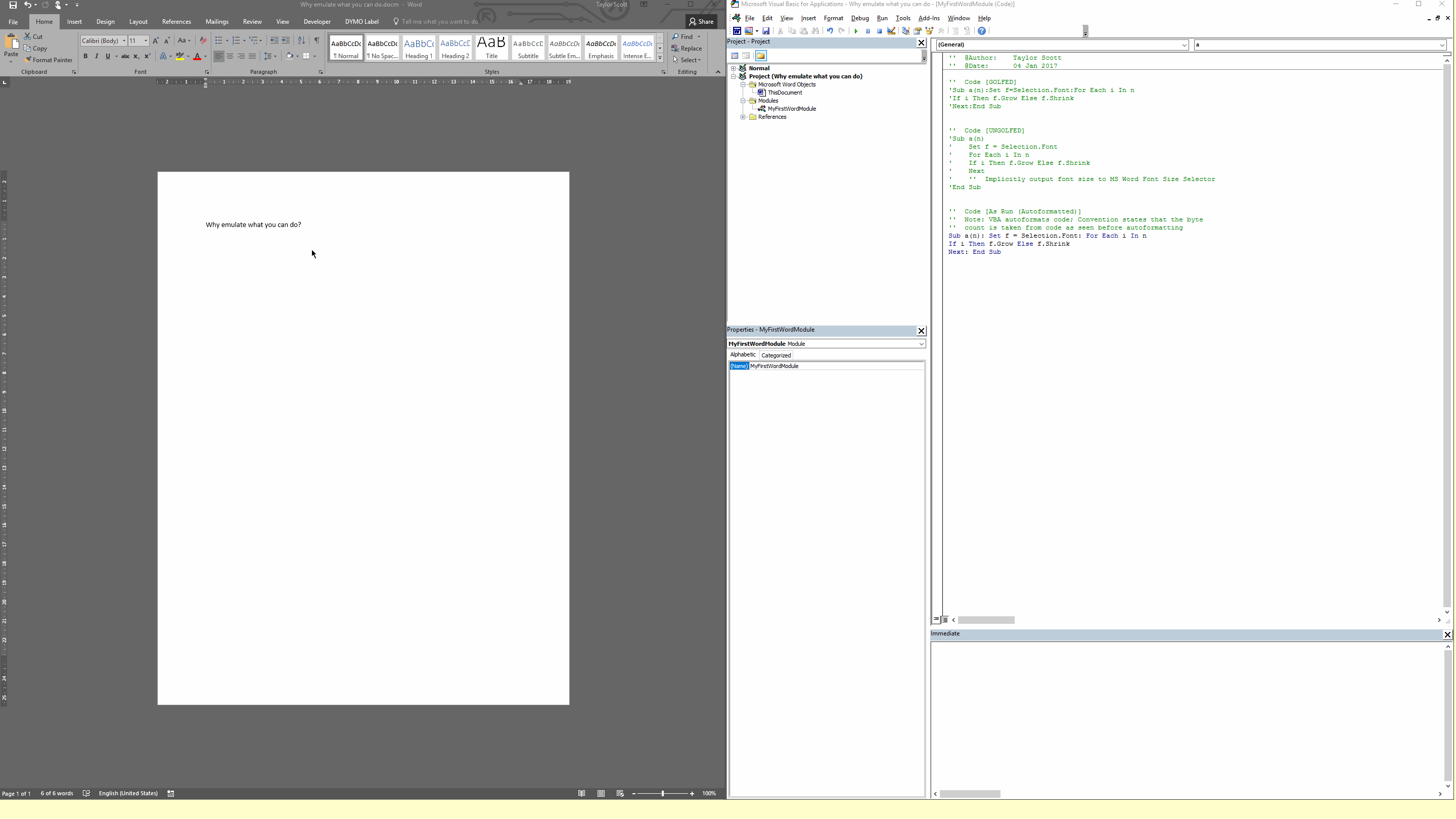Word và các nút thay đổi kích thước phông chữ theo các quy tắc sau:A▲ᴀ▼
- Cỡ chữ bắt đầu là 11.
- Nếu được nhấn khi kích thước phông chữ là 1, kích thước vẫn là 1.ᴀ▼
- Kích thước phông chữ thay đổi với 1 điểm trong phạm vi 1 - 12.
- Cỡ chữ thay đổi với 2 điểm trong phạm vi 12 - 28.
- Các lựa chọn là 28, 36, 48, 72 và 80 trong phạm vi 28 - 80.
- Cỡ chữ thay đổi với 10 điểm trong phạm vi 80 - 1630.
- Cỡ chữ thay đổi với 8 điểm trong phạm vi 1630 - 1638.
- Nếu được nhấn khi kích thước phông chữ là 1638, kích thước vẫn là 1638.A▲
Bài tập
Trong càng ít byte càng tốt, xác định kích thước phông chữ kết quả khi được cung cấp một bộ nút nhấn ở bất kỳ định dạng hợp lý nào.
Ví dụ
[3,-1,2], nghĩa là : Kết quả là 18.A▲A▲A▲ᴀ▼A▲A▲
Một số định dạng có thể là '^^^v^^', [1 1 1 -1 1 1], [True,True,True,False,True,True], ["+","+","+","-","+","+"], "‘‘‘’‘‘", "⛄️⛄️⛄️🌴⛄️⛄️", 111011, "CaB", vv ...
[2]: 14
[-1]: 10
[13]: 80
[-11,1]: 2
[11,-1]: 36
[170,-1]: 1630
[2000,-2,100]: 1638

"^vvv^v^^^v",[-1, 1, 1, -1, 1, -1],[0, 1, 0, 1, 1, 0, 1]?